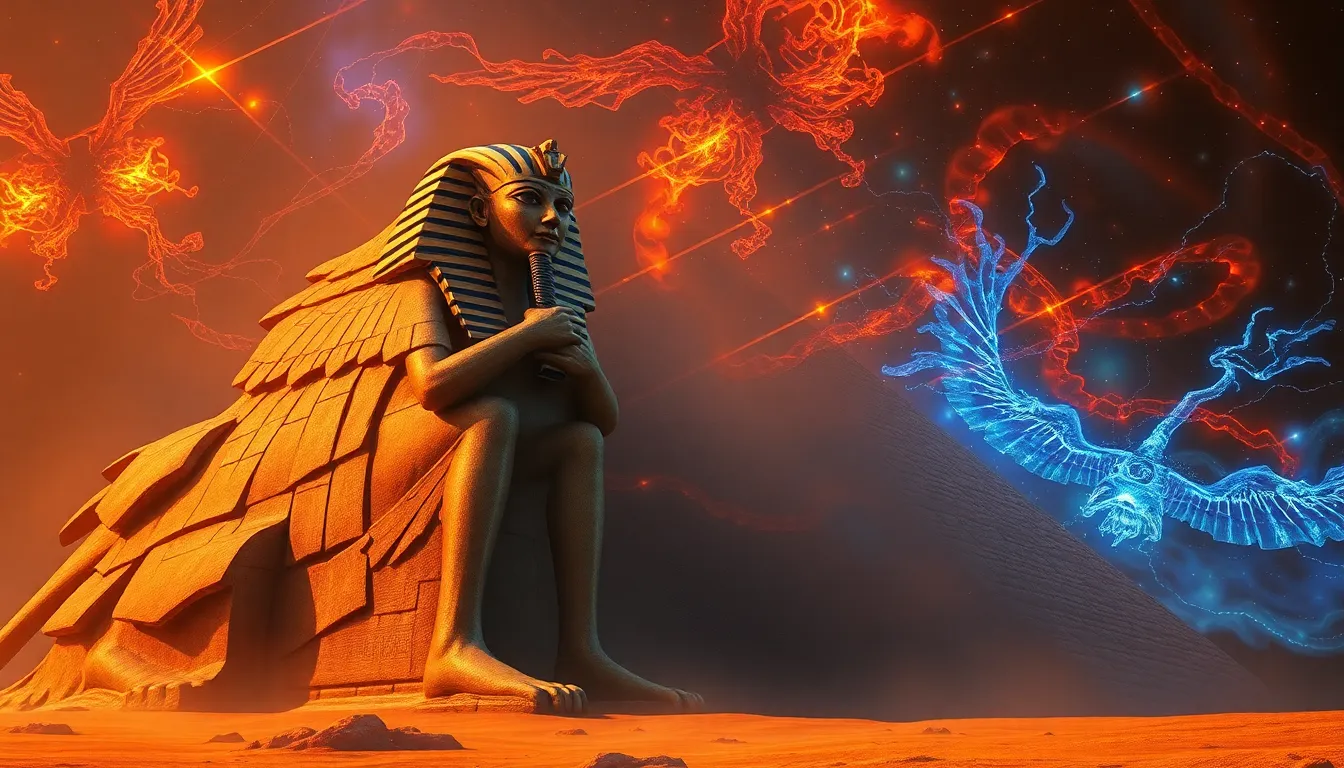The Book of the Dead: Myths and Legends
I. Introduction to the Book of the Dead
The Book of the Dead, known in ancient Egyptian as the “Book of Coming Forth by Day,” is a pivotal funerary text that has fascinated scholars, historians, and enthusiasts of mythology alike. This collection of spells, prayers, and incantations was designed to assist the deceased in navigating the afterlife, ensuring a safe passage to the realm of the dead.
Its significance extends beyond mere funerary practices; it embodies the intricate beliefs of ancient Egyptians regarding the afterlife, morality, and the cosmos. This article aims to explore the historical context, content, deities, myths, rituals, and enduring legacy of the Book of the Dead, shedding light on its profound impact on ancient Egyptian culture and beyond.
II. Historical Context and Origins
The Book of the Dead evolved from earlier funerary texts, such as the Pyramid Texts and Coffin Texts, which date back to the Old and Middle Kingdoms of ancient Egypt. These earlier texts focused on royal burials and were exclusive to the pharaohs, while the Book of the Dead democratized access to the afterlife, allowing all individuals, regardless of status, to utilize its spells.
The origins of the Book of the Dead can be traced to the New Kingdom (circa 1550-1070 BCE), a period marked by significant advancements in art, architecture, and religious practices. Archaeological discoveries, including papyrus scrolls and tomb inscriptions, have revealed the text in various versions, each tailored to the beliefs and practices of the deceased.
Notable pharaohs, such as Seti I and Ramses II, are associated with exquisite copies of the Book of the Dead, showcasing the text’s importance in royal funerary customs.
III. Structure and Content of the Text
The Book of the Dead is primarily presented in scroll format, often made from papyrus, and can range in length. Different versions exist, each with unique spells and illustrations tailored to the deceased’s needs.
Major components of the Book of the Dead include:
- Spells: These incantations were intended to protect the deceased and guide them through the afterlife.
- Prayers: Offering supplications to the gods for mercy and assistance.
- Illustrations: Richly detailed images that depict various scenes from the journey of the soul.
The text is steeped in symbolism, emphasizing themes of resurrection, judgment, and the balance between chaos and order. The recurring motif of the journey through the afterlife highlights the central belief in rebirth and eternal life.
IV. The Role of the Gods and Deities
Central to the Book of the Dead are the deities who play crucial roles in the afterlife process. Key figures include:
- Osiris: The god of the afterlife, resurrection, and agriculture, Osiris presides over the judgment of the dead, determining their fate.
- Anubis: The god of mummification and the protector of graves, Anubis guides souls through the Duat and oversees the weighing of the heart.
- Ma’at: The goddess of truth and justice, representing the moral order of the universe. Her feather is used in the weighing of the heart ceremony.
- Thoth: The god of wisdom, writing, and knowledge, Thoth records the results of the judgment and assists in the spiritual journey.
V. Myths Associated with the Book of the Dead
Several myths are intricately woven into the fabric of the Book of the Dead, enriching its narrative and theological framework. Noteworthy myths include:
- The Myth of Osiris: This myth narrates the death and resurrection of Osiris, who is killed by his brother Set and later resurrected by his wife, Isis. This story symbolizes the cycle of life, death, and rebirth.
- The Journey of the Soul: After death, the soul embarks on a perilous journey through the Duat, facing challenges and trials before reaching the judgment hall of Osiris.
- The Weighing of the Heart: In this ceremony, the deceased’s heart is weighed against the feather of Ma’at. If the heart is lighter, the soul is granted eternal life; if heavier, it faces annihilation.
VI. Rituals and Practices Surrounding the Text
Funerary customs were deeply intertwined with the Book of the Dead, reflecting the ancient Egyptians’ beliefs about death and the afterlife. Rituals included:
- Embalming and Mummification: The preservation of the body was essential for the soul’s successful journey and resurrection.
- Ritual Offerings: Food, drink, and other goods were provided to sustain the deceased in the afterlife.
- Priestly Involvement: Priests played a vital role in preparing the deceased, reciting spells from the Book of the Dead, and performing rituals to honor the gods.
VII. Legacy and Influence of the Book of the Dead
The Book of the Dead has left an indelible mark on various cultures and religions throughout history. Its themes of death, resurrection, and morality resonate with many belief systems. The text has influenced:
- Literature and Art: The imagery and narratives of the Book of the Dead have inspired countless works in art and literature, from ancient times to modern adaptations.
- Modern Media: Films, books, and games often draw upon its rich mythology, introducing new audiences to ancient Egyptian beliefs.
- Contemporary Discussions: The text remains relevant in conversations about death, the afterlife, and the moral implications of one’s actions in life.
VIII. Conclusion
The Book of the Dead stands as a monumental testament to the beliefs and practices of ancient Egyptians regarding the afterlife. Its intricate spells, rich symbolism, and the central role of deities like Osiris and Anubis reflect a profound understanding of life, death, and existence beyond the mortal realm.
As we explore the legacy of the Book of the Dead, we recognize its enduring importance in mythology and history. Its themes continue to resonate, encouraging reflection on our own beliefs about death and the possibility of an afterlife.
We invite readers to delve deeper into the captivating world of ancient Egyptian beliefs and texts, discovering the wisdom and insights that continue to inspire and intrigue us today.




